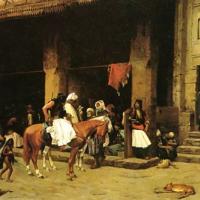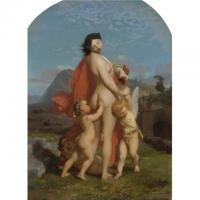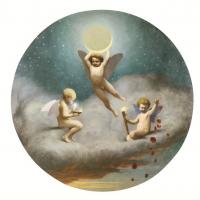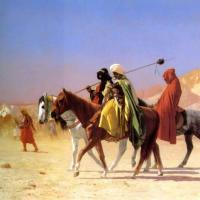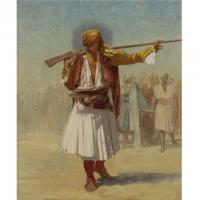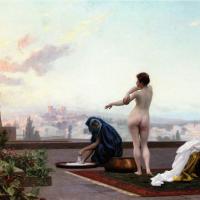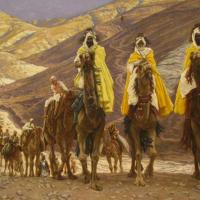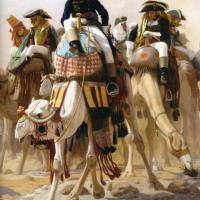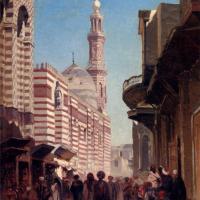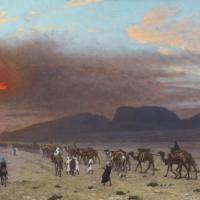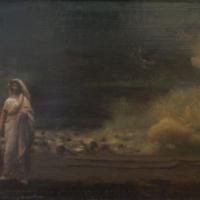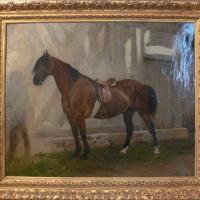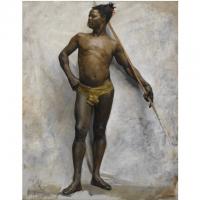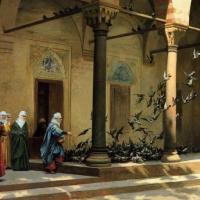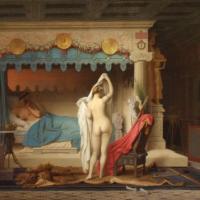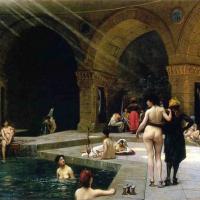Jean-Leon Gerome
A Cafe In Cairo
$450.00
A Street Scene In Cairo
$480.00
Allegory Of Night
$510.00
Arabs Crossing The Desert
$480.00
Arnaut Officer
$480.00
Bashi Bazouk and His Dog
$450.00
Bashi Bazouk Singing
$480.00
Bathsheba
$480.00
Bonaparte Et Son Etat
$480.00
Cairo
$450.00
Caravane Dans Le Desert
$480.00
Carpet Merchant In Cairo
$540.00
Cleopatra And Caesar
$480.00
Dante Et Virgile In Hell
$450.00
Egyptian Grain-Cutters
$450.00
Etude De Cheval
$450.00
Femmes Au Bain
$480.00
Guerrier Africain
$480.00
King Candaules of Lydia
$480.00
La Grande Piscine De Brousse
$480.00
La Halte
$480.00
Jean-Leon Gerome
Jean-Léon Gérôme (1824-1904)
Jean-Léon Gérôme (11 May 1824 – 10 January 1904) was a French painter and sculptor in the style now known as academicism. The range of his oeuvre included historical painting, Greek mythology, Orientalism, portraits, and other subjects, bringing the academic painting tradition to an artistic climax. He is considered one of the most important painters from this academic period. He was also a teacher with a long list of students.
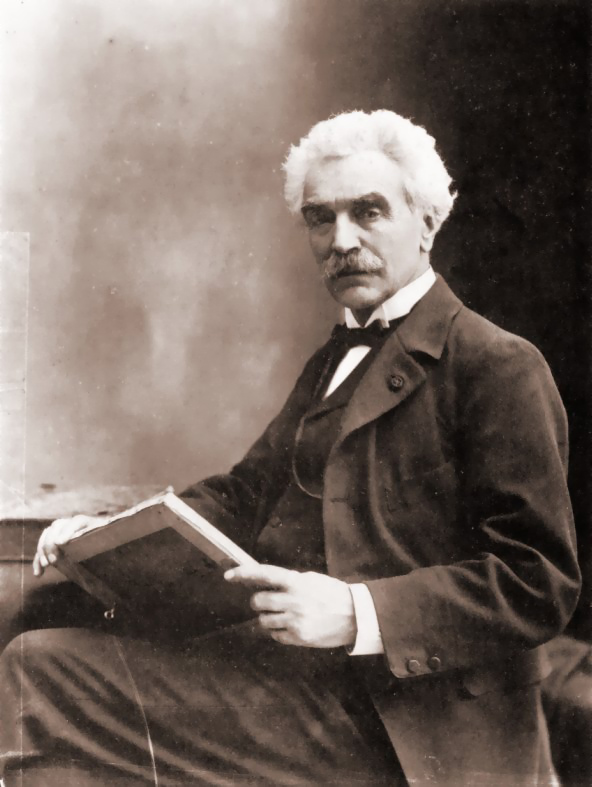
Gérôme was elected, on his fifth attempt, a member of the Institut de France in 1865. Already a knight in the Légion d'honneur, he was promoted to an officer in 1867. In 1869, he was elected an honorary member of the British Royal Academy. The King of Prussia Wilhelm I awarded him the Grand Order of the Red Eagle, Third Class. His fame had become such that he was invited, along with the most eminent French artists, to the opening of the Suez Canal in 1869.
He was appointed as one of the three professors at the Ecole des Beaux-Arts. He started with sixteen students, most who had come over from his own studio. His influence became extensive and he was a regular guest of Empress Eugénie at the Imperial Court in Compiègne.
The theme of his Death of Caesar (1867) was repeated in his historical canvas The Execution of Marshal Ney, that was exhibited at the Salon of 1868, despite official pressure to withdraw it as it raised painful memories.
Gérôme returned successfully to the Salon in 1873 with his painting L'Eminence Grise (Museum of Fine Arts, Boston), a colorful depiction of the main stair hall of the palace of Cardinal Richelieu, popularly known as the Red Cardinal (L'Eminence Rouge), who was France's de facto ruler under King Louis XIII beginning in 1624. In the painting, François Le Clerc du Trembly, a Capuchin friar dubbed L'Eminence Grise (the Gray Cardinal), descends the ceremonial staircase immersed in the Bible while subjects either bow before him or fix their gaze on him. As Richelieu's chief adviser, L'Eminence Grise was called "the power behind the throne," which became the known definition of his title.
When he started to protest and show a public hostility to "decadent fashion" of Impressionism, his influence started to wane and he became unfashionable. But after the exhibition of Manet in the Ecole in 1884, he eventually admitted that "it was not so bad as I thought."
In 1896 Gérôme painted Truth Coming Out of Her Well, an attempt to describe the transparency of an illusion. He therefore welcomed the rise of photography as an alternative to his photographic painting. In 1902, he said "Thanks to photography, Truth has at last left her well."
Gérôme was also successful as a sculptor. His first work was a large bronze statue of a gladiator holding his foot on his victim, shown to the public at the Exposition Universelle of 1878. This bronze was based on the main theme of his painting Pollice verso (1872). The same year he exhibited a marble statue at the Salon of 1878, based on his early painting Anacreon, Bacchus and Cupid (1848).
Aware of contemporary experiments of tinting marble (such as by John Gibson) he produced Dancer with Three Masks (Musée des Beaux-Arts, Caen ), combining movement with colour (exhibited in 1902). His tinted group Pygmalion and Galatea provided his inspiration for several paintings in which he depicted himself as the sculptor who could turn marble into flesh, examples of which (c. 1890) are in the Metropolitan Museum of Art, New York, and the Smart Museum, Chicago.
Among his other works are Omphale (1887), and the statue of the duc d'Aumale which stands in front of the château of Chantilly (1899).
He started experimenting with mixed ingredients, using for his statues tinted marble, bronze and ivory, inlaid with precious stones and paste. His Dancer was exhibited in 1891. His lifesize statue Bellona (1892), in ivory, bronze, and gemstones, attracted great attention at the exhibition in the Royal Academy of London.
The artist then began a series of Conquerors, wrought in gold, silver and gems: Bonaparte entering Cairo (1897); Tamerlane(1898); and Frederick the Great (1899).
Jean-Léon Gérôme died in his atelier on 10 January 1904. He was found in front of a portrait of Rembrandt and close to his own painting Truth Coming Out of Her Well. At his own request, he was given a simple burial service without flowers. But the Requiem Mass given in his memory was attended by a former president of the Republic, most prominent politicians, and many painters and writers. He was buried in the Montmartre Cemetery in front of the statue Sorrow that he had cast for his son Jean who had died in 1891.
He was the father-in-law of the painter Aimé Morot.



